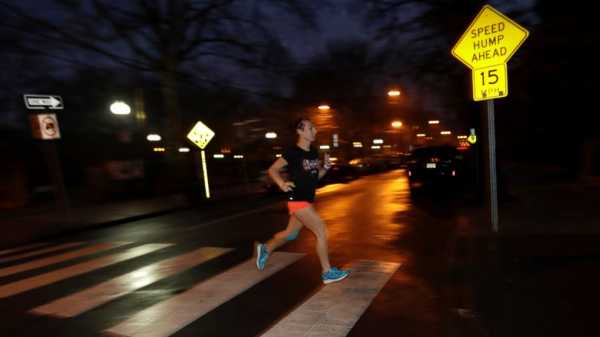
In 1967 the employee of the Boston marathon almost pulled the woman off the course after she managed to enter the male-only race. Five decades later, officials are not worried about race gender boundaries: they are now publicly acknowledging that transgender runners can compete with floor to identify them.
“We take people at their word. We register people as they define themselves,” said Tom Grilk, head of the Boston athletic Association, the group behind the race. “Members of the LGBT community for many years, and we would not add to that burden.”
At least five openly transgendered women had registered to run the storied 26.2-mile race through Boston and its suburbs on April 16. And although they are not the first, their presence helped to bring clarity to the race position on transgender runners.
In the past, it was unclear how they will be treated. Some just checked in and ran, while some were too scared to try, ‘ said Amelia Gapin a transgender woman from Jersey city, new Jersey, who was at the race this year.
“It’s kind of grim how people handle it,” said Gapin, who also leads the social media groups for TRANS runners. “We are such a small percentage of the population that we generally just fly under the radar.”
The issue drew attention in March after a blogger wrote about the three openly transgender women enrolled in Boston. Said Grilk not been a lot of controversy — the idea is to qualify and compete using the same floor, he said, but otherwise they will not be challenged.
This flexibility contrasts with the case in 1967, Katherine Switzer, who escaped the grip of official marathon which I learned that she entered the race using her initials K. V. Switzer. Meanwhile, the official went after violators of rules man, he was known as a landmark moment in the struggle to include women in the sport.
Questions about how to define and validate gender irritated officials at the highest level of the sport for decades. But at the Amateur level, this subject came up recently as a growing number of TRANS athletes look to compete without hiding their identity.
Several other major marathons said they have no official policy, but taking a similar approach to Boston. The organizers of the Chicago, new York, London and Los Angeles marathons, all said that they honor the gender that runners present at the time of registration.
“We want to be open and receptive to all our participants,” said Carey Pinkowski, Chicago marathon Executive race Director. “At the moment, we do not feel we should require legal or medical records or something along those lines.”
But there’s another wrinkle: many races, including Boston, new York and Chicago, runners demand to show IDs with the same names and genders with application forms, which can be an obstacle for TRANS athletes that have not legally changed their personal information. Race officials said they did not put a claim, but will follow their policy to make sure that they are inclusive.
In elite competition, the discussion mainly focuses on transgender women, who usually require surgery or drugs to lower their testosterone levels. Olympic officials announced new rules in 2016, the TRANS-women can compete, if their testosterone levels stay under a certain limit, and many professional race now to follow the same rules.
Although rates are lower for the Amateur runners in Boston, it can still be a thorny issue. Boston-one of the few marathons where even Amateur runners must meet strict qualifying times based on age and gender, and some runners spend years trying to qualify.
In response to the March blog, some commentators have said that transgender women have an unfair physical advantage and should not hit other women from qualifying.
Stevie Romer, a transgender woman from Woodstock, Illinois, says she was in Boston, as a woman, because she is. Although it did nothing to lower testosterone levels, Romer legally changed her sex, her hair grew and began to live openly as a woman, more than a year ago.
“To be able to experience it, I was very, very important,” she said. “I was a Runner since I can remember. I love running, but I don’t want to be transgender”.
For TRANS women who do lower their testosterone levels, medical experts say there is no evidence of athletic advantage.
“It is a fallacy and a myth,” said Dr. Alex Keuroghlian, Director of the Department of education and training programs at the Institute, Fenway, health, and advocacy center for the Boston LGBT community. “There is no physiological advantage assigned male at birth”.
Rather, the TRANS women who take drugs to lower testosterone often face side effects like dehydration, fatigue and reduced endurance that can spell disaster for training.
Gapin, a Runner from new Jersey, says she had to overcome large setbacks during its transition. Taking blockers testosterone, it decreased by more than a minute per mile. She later underwent surgery and had to take months of training to recover.
All told, it took Gapin three consecutive years as an openly transgender woman before she was in Boston, the goal it set seven years ago. And although she knows that some may not like it, she plans to launch this month race — and enjoy.
“I just want to race for fun and take it all,” she said. “Actually works is a kind of victory lap for what I achieved”.
—
Binkley can be reached on Twitter at @cbinkley
Sourse: abcnews.go.com






